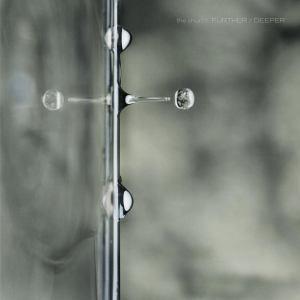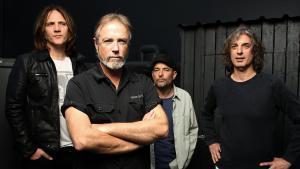 I almost didn’t review this album. Make no mistake, I completed my purchase with an eagerness I reserve for very few musical acts. If you’ve perused this site you’ll have found several articles related to The Church, Steve Kilbey and his many collaborations. Yes, The Church is a big part of my listening life and has been for, oh, about 23 years. A huge influence on my music, my writing, hell — if you think about all the time I spent listening to their albums, on my very character! Hence, I felt there would be a risk that a review from such as I would come across as mere fanboy-ism and therefore only of interest to rabid fans, not to discriminating listeners in search of a new fix.
I almost didn’t review this album. Make no mistake, I completed my purchase with an eagerness I reserve for very few musical acts. If you’ve perused this site you’ll have found several articles related to The Church, Steve Kilbey and his many collaborations. Yes, The Church is a big part of my listening life and has been for, oh, about 23 years. A huge influence on my music, my writing, hell — if you think about all the time I spent listening to their albums, on my very character! Hence, I felt there would be a risk that a review from such as I would come across as mere fanboy-ism and therefore only of interest to rabid fans, not to discriminating listeners in search of a new fix.
With the band being invited to make a special appearance at next year’s SXSW and the fact that every cool review organ under the sun will be reviewing this release, there seems little point in adding my wee voice, does there? That’s why I generally reserve the lion’s share of coverage on this site for unknown acts who could use a leg up.
Still, once I heard this record in full I realized there was no way I could not review it — it’s in me blood! Let’s establish my bona fides for this job. Of all the music writers out there, I’m possibly most qualified to review a Church album, having spent innumerable hours listening to Church and Church-related releases over the decades. And yet, as you can tell from my summary of their recordings, I’m by no means a sucker. I admit readily that in the last 10 years their work has not quite been up to the standard I’d hoped; each album has contained a few transcendent gems, of course, for The Church can be considered the greatest psych/space rock band of all time, let’s be straight on that. Yet I have to be honest, albums like Uninvited, Like the Clouds and Forget Yourself, and even the generally fine Untitled #23, contained a few subpar tracks. On the former album the band’s “formula” seemed stale, with even master lyricist Steve Kilbey resorting to fairly incoherent rhyming at times. These records had good moments but were nowhere near the glory of such albums as Starfish, Priest = Aura, Hologram of Baal and the band’s last true classic, After Everything Now This.
In fact, Kilbey’s solo collaborations with Martin Kennedy and with Isidore produced far superior albums overall, in my humble opinion.
Okay, so I am obviously capable of a discerning opinion. And this new album provides an excellent opportunity to offer one. It represents a momentous occasion: a rare line-up change. Forever, the heart of the band was bassist/singer Steve Kilbey and guitarist Marty Willson-Piper, as well as Peter Koppes, the other guitarist who absented himself for a couple of albums but is firmly back in the fold. Drummer/producer/engineer Tim Powles has been in the band for over 15 years.
MWP is, shall we say, a strong musical personality, the band’s most flamboyant onstage personality as well as its most outrageous musician, known for his upper-neck Rickenbacker freakout solos. His contributions to the band’s history are incalculable. The band has, however, made a very interesting choice of replacement: Ian Haug of none other than Powderfinger, formerly Australia’s biggest band.
This may seem a strange union to a lot of people, but not to me. I love “Tha Fingah” very much; sure, they’ve released their small share of lacklustre material too, but when they rocked, oh how they did, on albums like Vulture Street. The Finger made classy, tuneful classic rock perfectly and sure knew how to write a killer hook. Little known fact, The Church sometimes rocks too, often in a very glammy way, like a modern-day Be Bop Deluxe.
If I had started this blog a few years earlier, you can bet I’d have raved about Powderfinger’s last album, their magnum opus, The Golden Rule. That incredible album is a varied mix of aggressive garage rock, elegant balladry and atmospheric psych pop on which the band finally flashed all of its potential at once with groovy classics like “Burn Your Name” and “Sail the Wildest Stretch”. A great achievement for a “commercial” act.
Haug is not only an interesting choice because of his origins but because he is actually a similar player to Koppes. While MWP was the fire, Koppes was the slow-moving river, smooth, measured and elegant in his playing, and Haug, while not the same player, has a similar feel for note choice and the right way to let a tune breathe. The seamless sonic blending of these two players is one of the first things a practised listener will note on this album.

The production perfectly suits a selection of songs that contains NOT ONE dog, which is an amazing feat. Sure, I prefer some to others, but it is a great, varied set that touches on all the styles the band has displayed in its long history: the neo-psych they’re best known for but also glammy swagger, post-punk cool and ambient-influenced progressive rock.
This album belongs on the list of Church classics and is the band’s best work since 2002, by far. It’s a collection of pure, well-constructed and tuneful songs, not just jammy vibes. It is both a joy and a relief to be able to honestly and sincerely declare that.
So, since I like it so much, how ’bout a track-by-track?
1. Vanishing Man – Despite an ambient beginning, this soon kicks into a dark, gothic glam groove more like Bauhaus than anything pretty, over which Kilbey displays the greater charisma and vocal range that have characterized his later career. The chorus even has some high gang vocals worthy of T.Rex! Typical of Kilbey at his verbose cockiest: “Narcissus black/It’s grim up to the brim/You little cracker/Watch your back pilgrim.” A killer opener.
2. Delirious – Returning to familiar waters, this is a classic piece of chiming Church psych, reminding me of the best of Starfish, and also features some great ambient electronics on the intro. The urgent chorus shows a post-punk energy not heard since … well, maybe 1982!
3. Pride Before a Fall – The well-chosen first single is celestial space rock with shimmering waves of guitars like the finest material on Hologram of Baal. Nice chorus, too: “Pride before a fall/Dark before the dawn/Fall and fall and fall…”
4. Toy Head – This six-minute number lopes along with a verse that sounds like something from a late-seventies Iggy Pop album but has an elegant prog-rock chorus. The lyrics aren’t just clever rhymes, they’re Kilbey at his most surreal. There’s a awesome Ebow guitar solo, a throwback to the days of Heyday! And it ends with a full-on psych-rock freakout as Powles goes all Keith Moon with a phased drum solo underneath the band’s aggressive riffing.
5. Laurel Canyon – A new talent for tasteful, melodic, bouncy psych pop is shown; hell, this is practically Sunshine Pop … lovely strummed acoustic guitars, jingle-jangle electrics, a cheery California vocal from Kilbey; this is a style hinted at on previous Church albums but realized here (songs such as “No Explanation“, “Another Earth“). Some great lines pop out of the lyrics: “Music in my memory and a listen as the miles go by”,“Temporary like a love song”. Is this the band’s first great driving song?
6. Love Philtre – A lazy tune with dramatic piano — not the first time the band’s used one, but the first time in this way perhaps. Sort of like a bizarro-world Coldplay. Haug and Koppes’ guitars demonstrate that lovely spaciousness I referred to in a great melancholy atmosphere. This is music from an alien lounge on the other side of the galaxy.
7. Globe and Spinning – A full-on prog/pomp beginning is followed by a chugging stomper of a tune featuring a guitar part that closely reminds me of the classic “Tantalized”. A more textural piece with a big wall-of-sound wash. Some more great mystical psych lyrics too: “It’s almost never tomorrow/Time has left no footprint in these sands/No hint of passing in these lands/When there’s no light to follow”.
8. Old Coast Road – Maybe the album’s finest song, even shinier than “Laurel Canyon” and like something from The Go-Betweens’ 16 Lover’s Lane or Oceans Apart albums. Kilbey and Haug may well be channelling the romantic spirit of their old compadre Grant McLennan on this touching song, which positively glistens. (Note that Haug and McLennan had a one-off band together, Far Out Corporation, and Kilbey made two albums with the late bard.) To top it off, there’s a lovely classic-style Koppes solo, measured and melodic. Key lyric: “And then she told me/Don’t be afraid of yourself/And then she told me/You only got today”.
9. Lightning White – Another lengthy slow, chuggy number, of which there are several on this album, which sort of mixes the deep goth sound of Disintegration-era Cure with The Church’s traditional delay-drenched guitars … mega psychedelic space rock that allows Kilbey to stretch out lyrically and vocally. Also including another fabulously well-constructed, unassuming but affecting solo, presumably from Koppes.
10. Let Us Go – A super-dramatic mixture of psych with post-punk keyboards redolent of Ultravox with John Foxx. The open, spacy arrangement really breathes.
11. Volkano – Again, those early eighties-sounding icy synths lead into a melancholy number that sounds like it was recorded in Berlin with Conny Plank, not Australia. Kilbey tells another of his classic world-weary tales and Koppes really stretches out those echoey chords in this one. There’s also touches of an early Floyd vibe circa Ummagumma.
12. Miami – While I find this shallow place a weird setting for a song of this nature, the 8:39 closer allows the band to really stretch out. The intro reminds us very clearly and directly of the classic “Destination” from Starfish (perhaps deliberately?), and there’s a surreal set of lyrics … sort about a relationship but in a surreal retro version of Miami that is a mere backdrop on Kilbey’s ruminations. This epic goes from space-rock to psych to folk-rock throughout and rides out with a couple of groovy minutes of psych jamming anchored by Powles’ authoritative beat.
Yep, the best album one of the world’s great bands has released in a long time. You’d better go listen.
Listen to “Pride Before a Fall”
Go to Church
(thanks to The Church discography for the unofficial but no doubt accurate lyric transcriptions)



